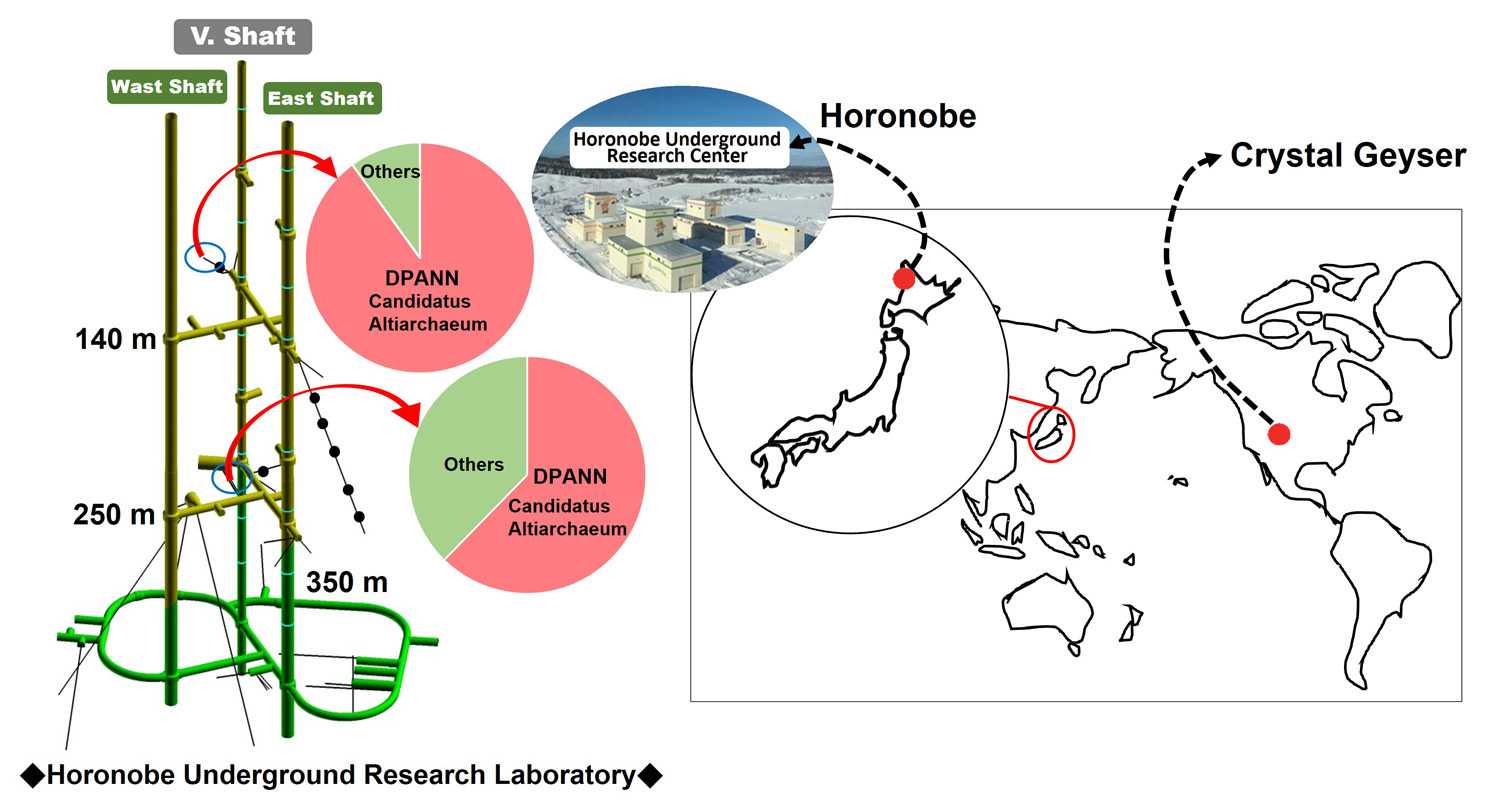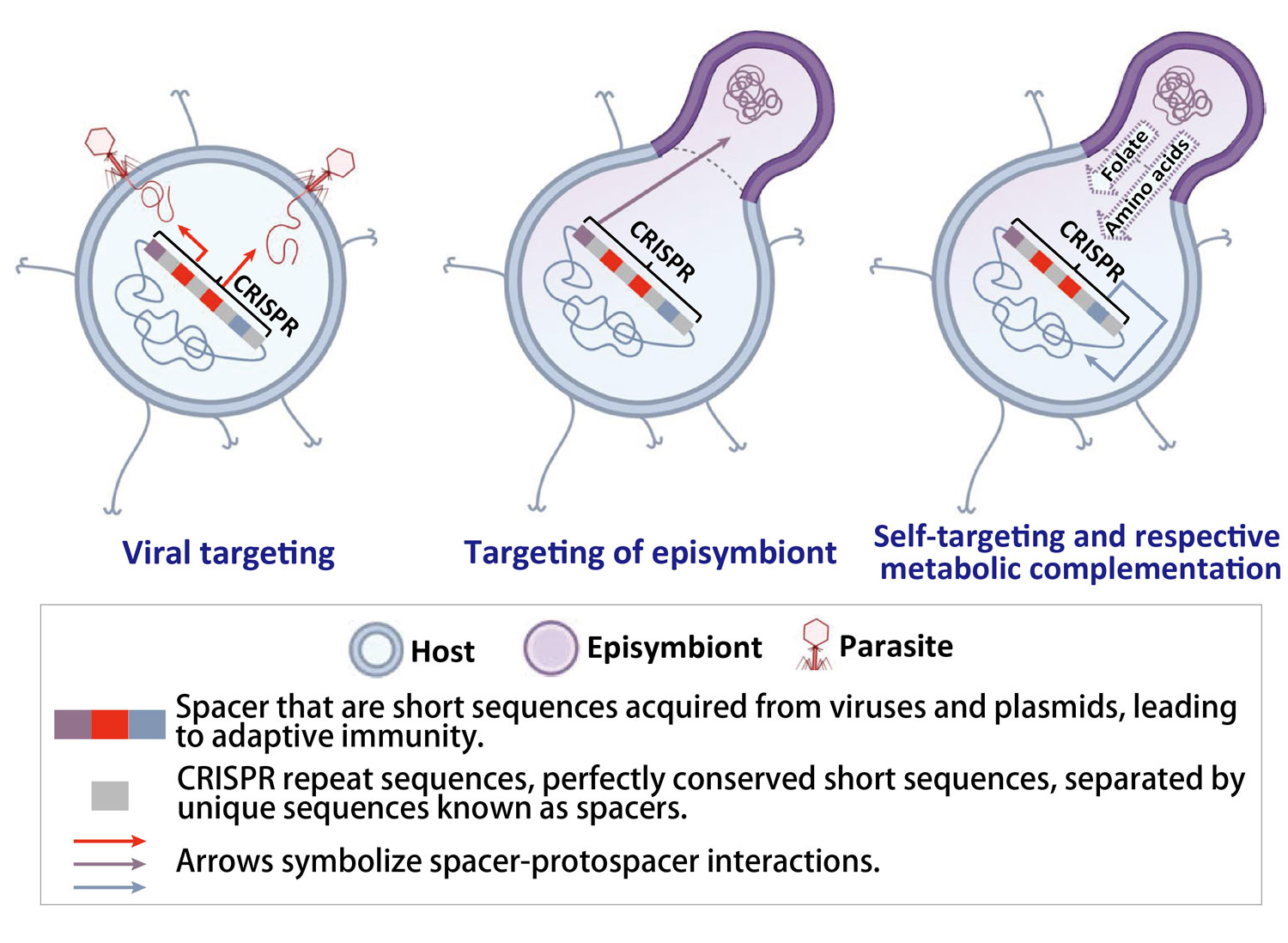Publication Date: July 2, 2025
Access counts:0
Exploring the Ecological Function of Unknown Microbial Communities in Deep Subsurface Environments
-A Predicted CRISPR-Mediated Symbiosis Between Uncultivated Archaea-

Fig. 1 Abundance of Candidatus Altiarchaeum horonobense in sedimentary rocks at the Horonobe Underground Research Laboratory

Fig. 2 Illustration of the newly proposed functionality of CRISPR–Cas systems within Ca. Altiarchaea
In Japan, it has been decided that high-level radioactive waste will be disposed of in stable geological formation more than 300 m deep. Although subsurface environments are among Earth’s largest habitats for microbial life, the microbial ecosystems and their metabolic functions remain largely unknown. It is necessary to evaluate microbial effects in performance assessments of geological disposal.
Using metaomics datasets from the Horonobe Underground Research Laboratory in Japan and Crystal Geyser, USA, we found that the clustered regularly interspaced short palindromic repeat (CRISPR) spacers of the hosts Candidatus Altiarchaeum horonobensis and Ca. A. crystalense matched the respective putative essential genes in the genomes of their episymbionts belonging to the genus Ca. Huberiarchaeum. CRISPR–Cas systems defend prokaryotic cells from invasive viral and plasmid DNA as well as from other mobile genetic elements. Metabolic interaction modeling has also revealed complementation between hosts and episymbionts. On these grounds, we propose that episymbionts are either parasitic or mutualistic depending on the genotype of the host. We expand our analysis to suggest that the targeting of symbiotic archaeal genomes using CRISPR–Cas systems has evolved independently in various archaeal lineages.
The discovery of microbial ecosystems in subsurface environments has important implications in safety evaluations of geological disposal.
If you have any comments or feedback about this page, please click the button to share your thoughts with us.
